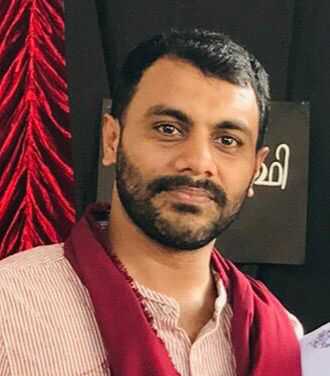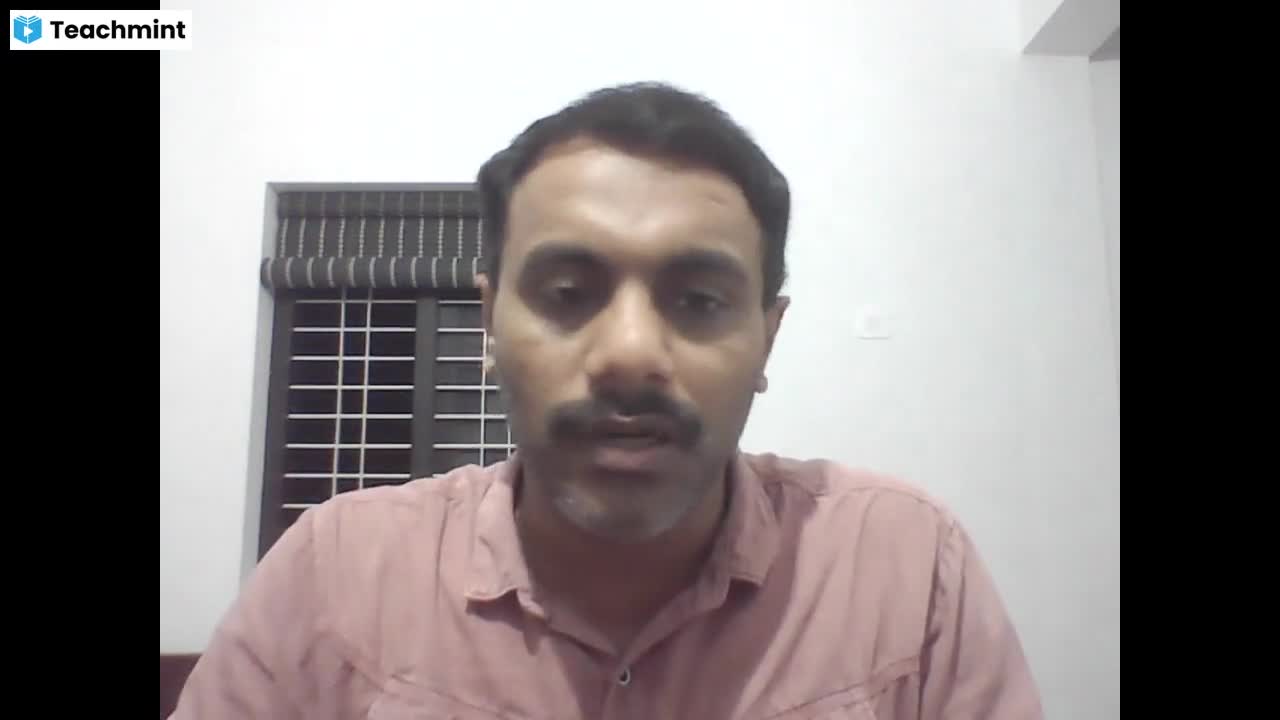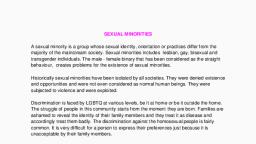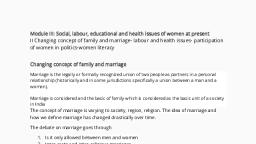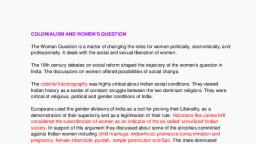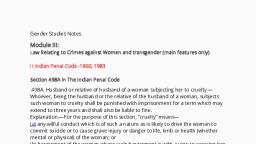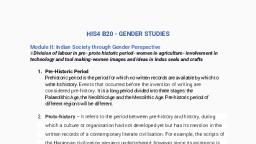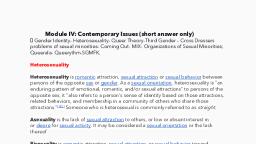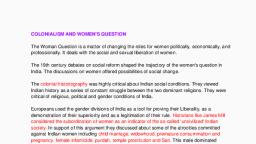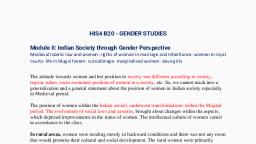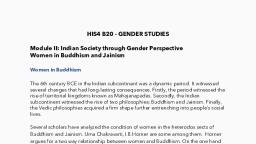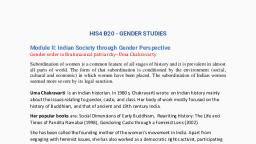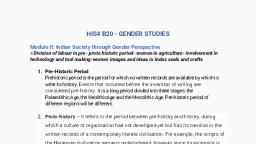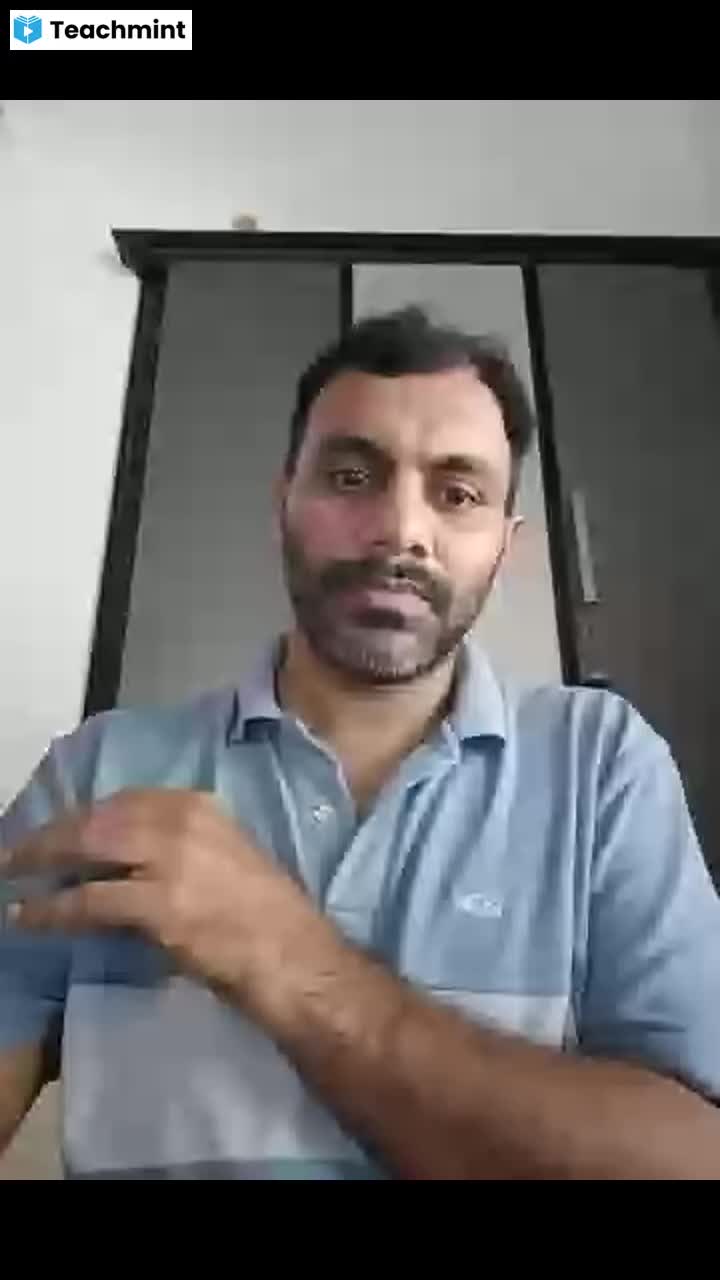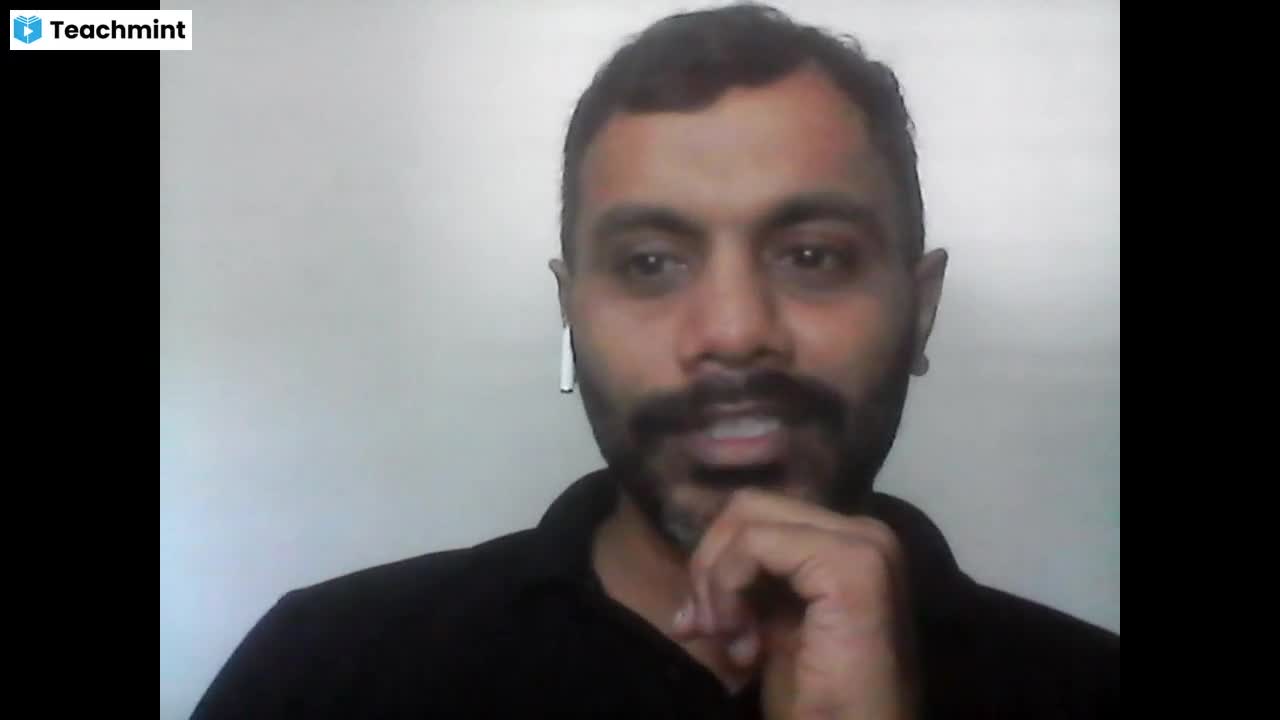Page 1 :
Module IV: Contemporary Issues (short answer only), Gender Identity- Heterosexuality- Queer Theory-Third Gender – Cross Dressers, problems of sexual minorities- Coming Out- MIX- Organizations of Sexual Minorities;, Queerala- Queerythm-SGMFK., Heterosexuality, Heterosexuality is romantic attraction, sexual attraction or sexual behavior between, persons of the opposite sex or gender. As a sexual orientation, heterosexuality is "an, enduring pattern of emotional, romantic, and/or sexual attractions" to persons of the, opposite sex; it "also refers to a person's sense of identity based on those attractions,, related behaviors, and membership in a community of others who share those, attractions."[1][2] Someone who is heterosexual is commonly referred to as straight., Asexuality is the lack of sexual attraction to others, or low or absent interest in, or desire for sexual activity. It may be considered a sexual orientation or the lack, thereof, Bisexuality is romantic attraction, sexual attraction, or sexual behavior toward, both males and females, or to more than one gender.[4] It may also be defined to, include romantic or sexual attraction to people regardless of their sex or gender, identity, which is also known as pansexuality, Third Sex or third Gender, The term third sex originated in the late nineteenth century among sexologists as a, way to describe homosexual men and lesbians. It did not carry the moral or legal, stigma of sodomite, and suggested an innate or biological factor existed in behaviors, that fell outside traditional categories of male and female. However, it also conflated, same-sex desire with gender variance. Karl Heinrich Ulrichs used the word Urning in, the 1860s to describe a third sex male being who desired other men; Richard von, Krafft-Ebing used the term sexual invert to describe a similar being in his, 1886 Psychopathia Sexualis. Havelock Ellis and John Addington Symonds followed, suit in their 1896 study, Sexual Inversion, and Edward Carpenter followed the thirdsex model in his 1908 work, The Intermediate Sex. The notion of sexual inversion, insisted on a two-gender system, regarding homosexual men as women trapped in, men's bodies and homosexual women as men trapped in women's bodies. The, notion of an intermediate sex offered possibilities beyond two genders, allowing for, three or more genders, with at least one of these being neither male nor female, , LGBT is an initialism that stands for lesbian, gay, bisexual, and transgender. In use, since the 1990s, the initialism, as well as some of its common variants, functions as, an umbrella term for sexuality and gender identity.[1]
Page 2 :
It may refer to anyone who is non-heterosexual or non-cisgender, instead of, exclusively to people who are lesbian, gay, bisexual, or transgender.[2] To recognize, this inclusion, a popular variant, LGBTQ, adds the letter Q for those who identify, as queer or are questioning their sexual or gender identity, , Queer is an umbrella term for people who are not heterosexual or are not cisgender., Originally meaning "strange" or "peculiar", queer came to be, used pejoratively against those with same-sex desires or relationships in the late 19th, century., Queer theory is a field of critical theory that emerged in the early 1990s out of queer, studies (often, formerly, gay and lesbian studies) and women's studies.[1] The term can, have various meanings depending upon its usage, but has broadly been associated, with the study and theorisation of gender and sexual practices that exist outside, of heterosexuality, and which challenge the notion that heterosexual desire is, ‘normal’., A critical discourse developed in the 1990s in order, This theory intended to deconstruct (or ‘to queer’) sexuality and gender in the wake, of gay identity politics, which had tended to rely on strategic essentialism. Opposed, to gender essentialism, queer theorists see sexuality as a discursive social, construction, fluid, plural, and continually negotiated rather than a natural,, fixed, core identity. ‘The representation of gender is its construction,’ declares the, Italian-American feminist theorist Teresa de Lauretis, who coined the term ‘queer, theory’ in 1990. Butler, seeking to destabilize binary oppositions such as gay/straight,, introduced the key concept of performativity. Queer theorists foreground those who, do not neatly fit into conventional categories, such as bisexuals, transvestites,, transgendered people, and transsexuals. Existing movements which have been, significant influences are feminism and poststructuralism (particularly the, methodology of deconstruction). Foucault's influence has also been of central, importance, particularly his argument that homosexuality (and indeed, heterosexuality) as an identity emerged only in the late 19th century. Queer theory, has itself been a significant influence on cultural and literary theory, postcolonialism,, and sociology, and ‘queering’ is now applied also to the ‘boundaries’ of academic, disciplines., Informal use of the term "queer theory" began with Gloria Anzaldúa and other, scholars in the 1980s, themselves influenced by the work of French poststructuralist philosopher Michel Foucault,[3] who viewed sexuality as socially, constructed and rejected identity politics.[4] Teresa de Lauretis organized the first, queer theory conference in 1990; in the early 1990s, the term started to become
Page 3 :
legitimized in academia.[3] Early queer theorists include Eve Kosofsky, Sedgwick, Michael Warner, Lauren Berlant, Judith Butler, Adrienne Rich, and David, Halperin.[3, Cross Dressers, Cross-dressing is the act of wearing items of clothing not commonly associated with, one's sex. Cross-dressing has been used for purposes of disguise, comfort, comedy,, and self-expression in modern times and throughout history., Almost every human society throughout history has had expected norms for each, gender relating to style, color, or type of clothing they are expected to wear, and, likewise most societies have had a set of guidelines, views or even laws defining what, type of clothing is appropriate for each gender., The term "cross-dressing" refers to an action or a behavior, without attributing or, implying any specific causes or motives for that behavior. Cross-dressing is not, synonymous with being transgender., Patriarchy is a social system in which men hold the primary power over women and, their families in regards to the tradition, law, division of labor, and education women, can take part in.[1] Women used cross-dressing to pass as men in order to live, adventurous lives outside of the home, which were unlikely to occur while living as, women.[2] Women who engaged in cross-dressing in earlier centuries were lowerclass women who would gain access to economic independence as well as freedom, to travel, without much risk of losing what they had.[3] The practice of women dressing, as men was generally viewed more positively as compared to men dressing as, women. Altenburger states that female-to-male cross-dressing entailed a movement, forward in terms of social status, power, and freedom[2] whereas men who crossdressed were ridiculed or otherwise viewed negatively.[4] Some people also alleged, that men would cross-dress to gain access around women for their own sexual desire, In 1849, Ohio passed a law which prohibited its citizens from publicly presenting, themselves "in a dress not belonging to his or her sex", and before WWI, 45 cities in, the US went on to pass anti-cross-dressing laws., in San Francisco. The city passed its anti-cross-dressing law in 1863, and the specific, criminalization of one publicly presenting "in a dress not belonging to his or her sex", was included in a wider law which criminalized general public indecency such as, nudity, Islamic Point of view of cress dressing, Hijra (Hijada)
Page 4 :
Hijras as a community express a feminine gender identity, coming closest, experientially to what would be called in the West a transsexual, “a female trapped in a male body.”, Coming out, The process by which a gay/lesbian/bisexual person acknowledges his/her sexual, identity to himself/herself and a transgendered person acknowledges his/her gender, identity to himself/herself and then proceeds to tell others about it. Coming out has, many levels, starting from coming out to oneself, to coming out to family, friends,, colleagues and the wider society. Coming out is seen as an affirmative process and a, method of bringing about social change, though it is accompanied by a certain, amount of risk due to societal heterosexism and homophobia, , Problems of sexual minorities, In 1991, Amnesty International for the first time came out with a policy to support the, rights of people imprisoned because of their sexual orientation or because of, engaging in homosexual activity in private., Associated health and social issues, Identity Crisis, Coming-out, Loneliness, Suicidal Attempt,, Stress, Social issues may lead to possible health and psychological issues, especially in, youth. It has been found that sexual minorities face increased stress due to stigmas., This stigma-related stress creates elevated coping regulation and social and cognitive, processes leading to risk for psychopathology.[20], Risky behavior, The Centers for Disease Control (CDC) published their 2015 study of large cohorts of, ninth to twelfth grade students across the US. One hundred health behaviors were, shown to put LGB students at risk for health consequences. Sexual minority students, engage in more risky behaviors when compared with nonsexual minority students., Some students "...had no sexual contact [and] were excluded from analyses on sexual, behaviors [including] female students who had sexual contact with only females [and], were excluded from analyses on condom use and birth control use..." Also excluded, were "...male students who had sexual contact with only males [and] were excluded, from analyses on birth control use."[2] One small study showed that LGBT adolescents, were victimized more often, had higher rates of psychopathology, left home more, frequently, used highly addictive substances more frequently, and were more likely to, have more multiple sex partners than heterosexual adolescents.[20]
Page 5 :
Development[edit], Based on studies of adolescents, it is concluded that sexual minorities are similar to, heterosexual adolescents in developmental needs and concerns. However, research, has suggested that sexual minority youth (more specifically LGBT youth) are more, susceptible to psychological and health issues than heterosexual youth.[21], Health Issues - Diseases, Sexual minorities tend to use alternative and complementary medicine alternative, methods of addressing their health needs more often than heterosexuals.[22] Sexual, minority women have a higher incidence, of asthma, obesity, arthritis and cardiovascular disease than other groups.[23], When compared to the general population, sexual minorities have a higher risk for, self-injury.[24] The treatment of aging sexual minorities seems to be influenced more, by ageism. Support for aging sexual minorities appears to be common.[25], Social Discrimination, 1. The Family, Most Indian families socialize children into the inevitability of heterosexual, marriage and the pressure to marry begins to be applied slowly but inexorably., Both men and women experience the pressure, but undoubtedly the pressure, is greater on women, who in the Indian context have far less independence., There is no space within the family to express a non-heterosexual alternative. In, this conservative context some sexuality minorities have chosen to ‘come out’ to, their families as having an alternative sexual orientation. The reaction to this, particular disclosure has ranged from acceptance to violent rejection. The family, may completely disown their son or daughter and refuse to accept that he or, she is homosexual and forces the child to undergo psychiatric treatment in a, vain attempt to convert them into heterosexuality or to push them into an, unhappy marriage where the wife suffers equally, bearing the burden of an, unworkable marriage, and her sexual freedom curbed. In one reported case of, a boy studying in a prestigious college in Bangalore, when he came out to his, parents, they chose to disown him. They stopped paying his college fees forcing, him to discontinue his studies for one year. However after a year had passed, they were mollified enough to finally accept him. In another reported case of a, young man whose mother found out he was gay, she threatened to take legal, action against him. The most tragic case pertains to a newly married gay man, who could not bear the vicious verbal abuse of his domineering brother and he, and his wife are rumored to have committed suicide. Often, as in this case, the
Page 6 :
suicide is deflected by friends and family and attributed to a family quarrel or, some other cause. In fact, such a suicide, brought about by social persecution,, is nothing short of social murder. However there are some families who have, taken time to adjust to a new reality, going through phases of denial, hatred,, bitterness and finally acceptance. In one recent case, a retired police officer and, his wife came to the group Sabrang to find out more about homosexuality as his, son had come out to him as being gay. The parents after going through initial, shock were learning to cope with the new reality. What also needs to be, understood is that nothing prepares parents for such a disclosure considering, the absolute lack of non-judgmental information. Since there are few, mechanisms, which can help parents to understand and cope with such, disclosures, violence and hostility are understandable responses to coming out, in a cultural context of homophobia., •, •, •, , •, •, •, •, •, •, •, •, •, , feelings of not being safe travelling to and from school or in school., not going to school because they did not feel safe., forced to do sexual things they did not want to do by someone they were, dating or going out with one or more times during the 12 months, (touching, kissing, or physically forced to have sexual intercourse), had sexual intercourse., first had sex before age 13., had sex with at least four other people., not using birth control., had experienced sexual violence., Abuse, Public spaces, Household places, Work places, , Popular Culture, Popular culture today - comprising organs of mass media such as the press (regional, and national), television and films - does not offer any positive role models for, relationships between sexuality minorities. As in other societal institutions, there is a, resounding silence on the issue of lesbian, gay, bisexual or transgender relationships,, lives and culture. Sexuality minorities figure in popular culture, if at all, only as objects, of fun and derision replaying stereotypes of gay men as effeminate and lesbians as, manly. We will look at the portrayal of sexuality minorities in the following sections., Sexual minorities are generally portrayed in the mass media as being ignored,, trivialized (less important), or condemned. The term symbolic annihilation accounts, for their lack of characterization due to not fitting into the white, heterosexual, vanilla
Page 7 :
type lifestyle. It has been suggested that online media has developed into a space in, which sexual minorities may use “social artillery”. This description centers on how, social networking and connections to oppose instances of homophobia.[27] Still, some, individuals have made their way into the media through television and music. TV, shows such as The Ellen DeGeneres Show and ABC’s Modern Family star individuals, who are open about their non-heterosexual lifestyles. In music, people like Sam, Smith and Sia have created songs that express their emotions and sexuality with a, number of followers. While sexual minorities do have a place in the media, it is often, critiqued that they are still limited in their representations. In shows, if a character is, gay, they are often a very shallow character that is only present for comic relief or as a, plot twist. Compared to a heteronormative counterpart, the sexual minority is often a, mere side-kick. However, since the integration of actors, musicians, and characters of, sexual minorities, the idea of non-normativity has become more normalized in, society.[28], Films and books in English, The last decade has seen a spurt of films on issues relating to sexuality minorities,, such as ‘Fire’ and ‘Bomgay’ and the recent documentary by the young Delhi-based, film maker, Nishit Saran on coming out to his mother, called ‘Summer in my veins’ As, for writing about sexuality minorities, some prominent studies are: Shakuntala Devi’s, The World of Homosexuals (1977); the path breaking survey, Less than Gay (1991);, Arvind Kala’s somewhat sensational and prejudiced account, Invisible Minority, (1992); Giti Thadani’s important study of lesbianism in the Indian tradition, Sakhiyani, (1996); and Ruth Vanita and Saleem Kidwai’s Same Sex Love in India (2000). Suniti, Namjoshi, Shyam Selvadurai, and Firdaus Kanga are some of the noted fiction writers, exploring issues of different sexualities. In 1999, Penguin published anthologies of, gay and lesbian writing in India edited by Hoshang Merchant and Ashwini Sukthankar, respectively, which had a good reception, on the whole. 3.3.2 English language press, The portrayal of sexuality minorities in the English language press has become more, and more positive in the last decade, especially after the publication of Bombay Dost,, the first gay magazine in India, which started in June 1990, and major media, coverage given to the marriage of two policewomen Leela and Urmila in 1988. A, typical article of English language press is Parvati Nair’s ‘Gay... and happy’ which, gives a sympathetic account of gay men, one of whom is quoted as saying: “The two, most common misconceptions about gay men seem to be that they are either, impotent and are therefore a failure with women or that they are sex-crazed and, casually rape every young boy they come across. This is a ridiculous generalization;, it’s like believing that every ‘straight’ single male is celibate or that all married women, are unhappy. Nobody is perfect and there are decent gays and perverts just as there, are among straight people” (‘Trends”, Indian Express 23 October, 1997). Newspapers, and news magazines such as Times of India, India Today, Sunday, The Week,, Bangalore Monthly (now Weekly) and Asian Age have been carrying articles with a, positive slant. Some newspapers such as Asian Age and Times of India support gay
Page 8 :
rights more than others. However many articles still play on stereotypes and spread, misinformation. One common stereotype sees homosexuality as a form of sex work, and gays as people who are pushed into homosexuality for economic reasons. A, typical article is Gautam Machaiah’s piece titled ‘The Gay Kingdom’ with a box item, “They made me a gay” (Indian Express 20 February 1994). S. Seetalakshmi also plays, on the same stereotype: “Though many people deny the existence of homosexuality, in India, a large number of young boys and girls are lured into it for various reasons, including money and jobs”. (Times of India, 25 October 1997). Another article titled,, ‘Students take to the gay way to make money’ replays the same stereotypes and, notes that young students pick up elderly men to make money (Times of India, 2 June, 2000). Often the stark illustrations accompanying these articles are quite revealing of, how the dominant culture constructs gays: depressed, lonely, fragmented and, dwelling in the depths of a gloomy and perverse underworld. The suggestion is that, gays have created their own private little hells and have put themselves out of reach, of humanity. 3.3.3 Regional language press The regional press moves beyond mild, expression of stereotypes and is often viciously homophobic characterizing, homosexuality as a disease, perversion and disorder;, Cultural issues, Current and past research has been "skewed toward SM men—and is, disproportionately focused on HIV and other sexually transmitted infections.", Between 1989 and 2011, numerous grants for research were sponsored and funded, by the US National Institutes of Health (NIH) but funded research for sexual minorities, and health made up 0.1% of all funded studies. Most research has been directed, toward gay and bisexual men. Women sexual minority studies accounted for only, 13.5%.[29], Sexual minorities in South Africa have sexual-orientation-related health inequities, when compared to other countries. One of the highest prevalences of sexual violence, directed toward women of a sexual minority occurs in South Africa. Women of color, who are living in low income urban areas are notably targeted. The perpetrators of, sexual violence believe they are "correcting the women," and their actions will cure, them of their homosexuality.[29], Discrimination by the State, 377 of the Indian Penal Code Legal Discrimination against the sexuality minorities, takes many forms, the most notorious being Section 377 of the Indian Penal Code, (IPC), a British colonial legislation criminalizing homosexual behavior, that continues, to be in the Indian statute book although it has long since been removed from the, British statute book. Section 377 reads: Of unnatural offences: Whoever voluntarily, has carnal intercourse against the order of nature with any man, woman, or animal,, shall be punished with imprisonment of either description for a term which may, extend to 10 years and also be liable to fine.
Page 9 :
A Petition was filed before the SC by dancer Navtej Jauhar and four others in 2018 to, reassess the judgment passed in the case of Naaz foundation before the Delhi HC., The five judge bench led by the then CJI Deepak Mishra diluted Section 377 to, exclude all kinds of consensual sex as it was arbitrary and irrational. SC in its, judgment mentioned that “Consensual sex between adults in a private space, which is, not harmful to women or children, cannot be denied as it is a matter of individual, choice. ”Justice Chandrachud noted that right to privacy and the protection of sexual, orientation are fundamental rights which lie at the core of rights enshrined under, Article 14, 15 and 21 of the Constitution. The SC decriminalized 377 to the extent that, it would not exclude unnatural offences against minors and animals., The Transgender Persons (Protection of Rights) Bill, 2019, The Indian Parliament passed the Transgender Persons (Protection of Rights) Bill, 2019, which prohibits discrimination against Transgender with respect to education,, employment and the ability to rent or buy property. This Bill mandates for legal gender, recognition in a two step process:, It requires an individual to apply for “Transgender Certificate” from the District, Magistrate of their residence. This is also applicable in case of a person’s self-declared, identity., Consequently, the certificate holder can apply for a “change in gender certificate,”, which signals to authorities to change their legal gender to male or female with a proof, of medical surgery, issued by a hospital office., The Bill violates Nalsa v. UOI, judgment of SC which recognized the transgender, people belonging to third gender who are equally entitled to enjoy all fundamental, rights. In addition to this, certain provisions of this bill are contrary to international, standards of gender recognition such as UN High Commissioner for Human Rights,, World Professional Association for Transgender Health and the Asia-Pacific, Transgender Network. The right to recognition as a person before the law is, guaranteed in numerous international human rights conventions, and is a fundamental, aspect of affirming the dignity and worth of each person. Therefore, the legislation, should ensure equal fundamental right of privacy and freedom of expression to all, persons irrespective of their race, caste, sex or religion., Emergence of sexuality minority activism, One welcome development is the formation in April 2000 of a coalition of sexuality, minorities (including a lawyer’s collective and a woman’s group) to resist these
Page 10 :
increasing police violations against gay/bisexual men in parks and other recreational, areas. The coalition has been able to bring about some public awareness and, support for the issue, leading in turn to the admittedly minimal empowerment of a, hitherto powerless minority to be able to at least report instances of police, harassment to a sensitive group. The coalition comprises several Bangalore-based, organizations, such as ALF, Good As You (GAY), Manasa, Sabrang, Sangama,, Snehashraya, and Swabhava, which are involved with the rights of sexuality minorities., , Kerala has launched many initiatives to protect and empower gender minorities. In, 2015, it became the first state to have a transgender policy. Projects like gender park,, gender taxi, pension and scholarships for transgender students soon followed. Kochi, Metro Rail, which started on June 17, hired 23 transgenders as housekeeping and, ticketing staff. The queer pride marches and non-governmental pressure groups, were instrumental in increasing the visibility of the transgender community in the, state., , Queerala, Jijo Kuriakose, Queerala founder, Queerala, a registered community based Organisation (CBO) for Malayali LGBTIQ, people, It gives adequate support to Malayali persons who belong to the sexual and, gender minorities. Queerala originally started in May 2013 as a secret Facebook, page where closeted LGBTQAI+ community members met over the internet. Since its, start of operations, Queerala has been an active platform for the rights of the, LGBTIQ+ community in Kerala and India and focuses on various awareness, campaigns on Sexual Orientation, Gender Identity/Expression and Sex Characteristics, (SOGIESC). Queerala's representatives has been marking its presence, in areas of, literature, art, cultural spaces, academic discourses as well, besides conducting case, studies on issues pertaining to sexual orientation and gender identity. They also focus, on sensitisation on SOGIESC inclusive healthcare services, educational curriculum,, workplace policies and local self governance., QueerythmQueerythm is a Thiruvananthapuram-based LGBTIQ community, in the state of, Kerala. Founded in 2017, the organization focuses upon empowering Queer rights, and lifestyles and developmental prospects of the LGBTIQ community for a better, living.[1] Ever since its inception, Queerythm has launched various events,, programmes and initiatives to support the queer community across the state and, extended support across India. One of the most prominent service is its 24 x 7 queer
Page 11 :
helpline, that assists queer people in terms of counselling, crisis management and, emergency help., Queerythm was founded in 2017 under the leadership of Prijith PK, with the motto, of bringing LGBTIQ issues into limelight and to help the community in times of need., When the vision expanded, the organization realized the need of queer visibility to, create space for the community in terms of opportunity for talents, queer business, aspirations and employment possibilities. Hence launching into a series of activities,, Queerythm started creating platforms for LGBTIQ individuals through its event series, and activities, Queer Pride Walk, Queerythm organizes Queer Pride Walk every year in the city of, Thiruvananthapuram. [5][6][7] Hundreds of queer members across the state and country, flock to the city to take part in this grand parade and express themselves freely. The, event is usually accompanied by a stage show that consists of dance, theater arts, performance, music and DJ., 24 x 7 Helpline, Queerythm dedicated the first ever 24 x 7 LGBTIQ helpline to the community for, helping the queer individuals in their times of necessity.[8] The services includes, counselling through trained personnel, crisis management, support initiatives in, Thiruvananthapuram and Kerala and availing possible support through local LGBTIQ, connect programme., Rang- Queer YouTube Channel, An exclusive YouTube channel for the queer community in Kerala called Rang was, launched by Queerythm for bringing LGBTIQ news, activities and talents to, limelight.[9] The channel hosts various interview sessions with queer celebrities,, performances by queer talents and other initiatives by Queerythm., QRang- LGBTIQ Theatre Group, Queerythm launched India's first ever LGBTIQ Theatre Group called QRang,, exploring its wings in the performing arts segment.[10] The group explores the journey, of queer lives and exposes the issues and problems faced by them in the society., Queerythm LGBTIQ Community, Queerythm is a registered community-based organization for the LGBTIQ (Lesbian,, Gay, Bisexual, Transgender, Intersex and Queer) people. Started as a support group, (with regular monthly meetings on first Saturdays) for queer individuals, we aim for a
Page 12 :
society free of discrimination against gender and sexual minorities., Thiruvananthapuram based org., Conducted Pride Walk Pride Rally, Form Theater Group and Workshop (Q Raag), , SGMFK (Sexual and Gender Minorities Federation Kerala), Transgenders collective in Kerala, SGMFK acts as the bridge between different organisations and NGOs in the state, working for transgender welfare. It organised the first transgender athletics meet in, India at Thiruvananthapuram in April. In association with Kerala State Literacy Mission, Authority, it conducted a survey in which some 2,000 transgender school dropouts, were identified. SGMFK also helped to form district boards for transgender welfare in, association with Kerala State Legal Service Authority. Kavya Biju, secretary of SGMFK,, said talks had been going on with the government for a state-wide arts festival for, transgenders., Kerala State Transgender Justice Board, Kerala will set up a justice board for transgenders aimed at ensuring justice and, equality for members of the community., The first-of-its-kind board in the country, which is part of the state transgender policy, announced two months ago, will hear the transgenders exclusively and take steps to, bring them into the mainstream., Also, it will provide free legal aid to check growing discrimination and violence, against them., After the Supreme Court recognised transgenders as a third gender in 2014, many, people from this community came out openly to claim their rights. But violent, incidents against them also increased subsequently., The board will set up a 24x7 helpline, issue ID cards and ensure hassle-free, arrangements to mark their status in all records., It will help arrange home stay facilities for those ostracised by their families. Besides,, necessary steps will be taken to make educational institutions transgender-friendly.
